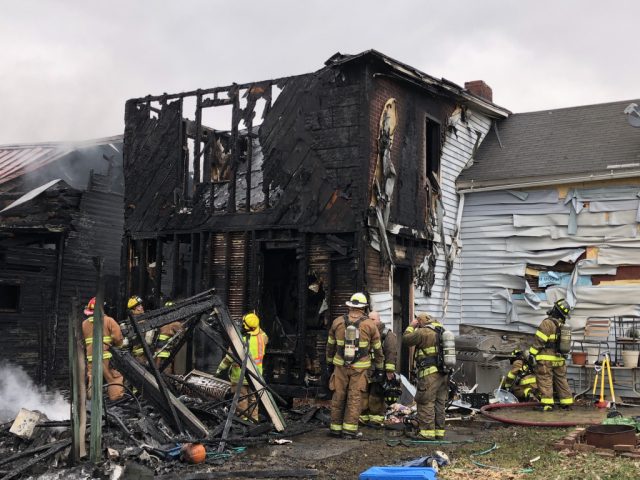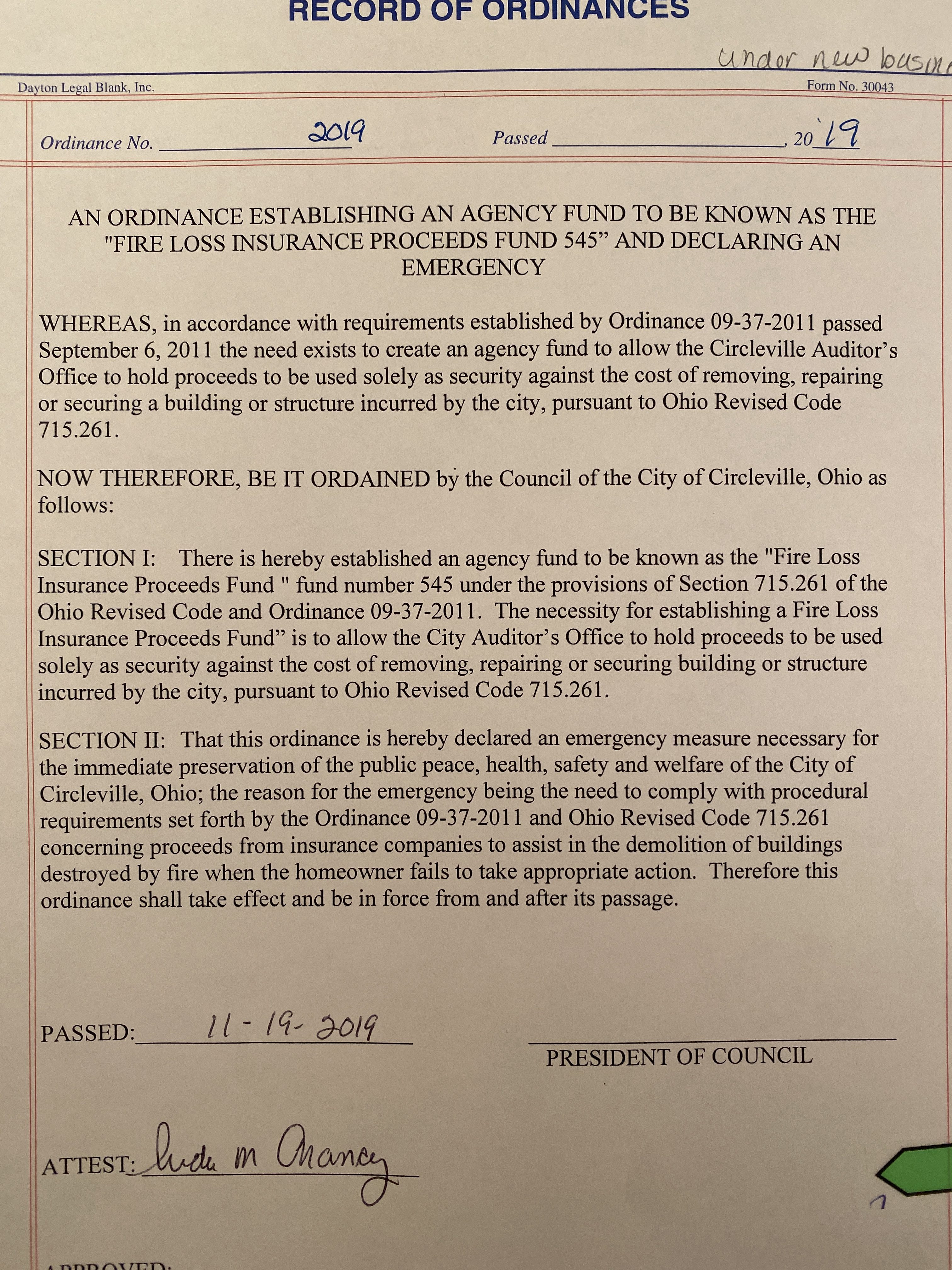CIRCLEVILLE – On December 17th 2017 a fire broke out on Logan Street, that fire started in the shed of the property of 127 Logan Street and spread into the home and then into the adjacent home of 125 Logan street, both homes were a complete loss.
The occupants in both homes escaped without injuries, and our local community corralled around the people in need and life went on.
Over a year later the burnt carcasses of those buildings still stood, neighbors started complaining because the rot and mildew of the wet contents inside had created a foul smell and when friends came to visit they always asked about the burnt property that sat next door. What would happen to it? Would they ever tear it down? Who’s responsible for this property?
This lead to Circleville Administration and their hands were tied on this situation. The homes were owned by property owners and they did not have the proper language in the ordinances to just have properties torn down.
Over the last several months city administration and city council have aimed at exactly that. Ordinances have already been passed aimed at nuisance properties and vacant properties,and now another ordinance heard for the first reading last night aims at the insurance of fire damaged homes.
“Another tool in the toolbox,” said Tom Spring Circleville Council Member about this ordiance that would allow the city to hold proceeds solely as security against the cost of removing, repairing, or securing a building or structure incurred by the city. (Ohio Revised Code 715.261). “This ordinance is declared an emergency measure necessary for the immediate preservation of the public peace, health, safety and welfare of the city of Circleville.”
The ordinance would hold some insurance funds until completion of the tear down and removal of the structure, then the monies would be released to the homeowner.
The ordinance passed unanimously on its first reading, it has two more readings before it will go into action.











